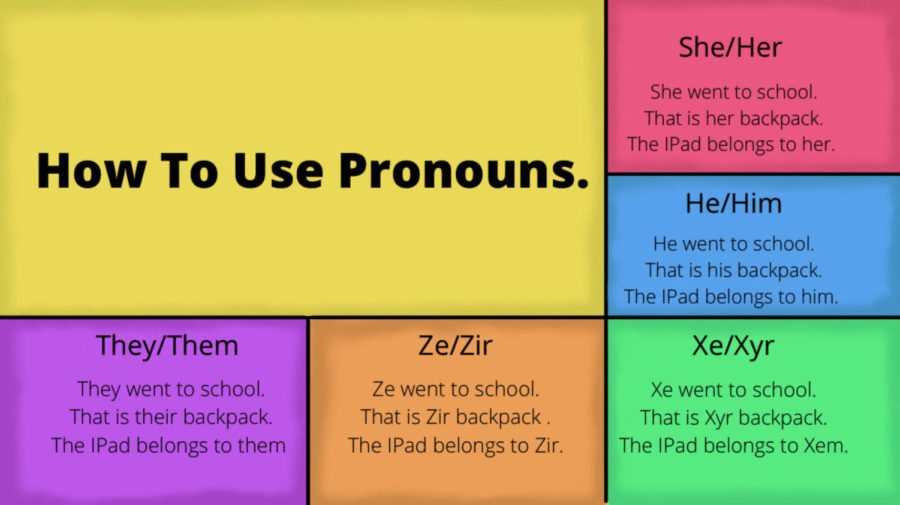Know Your Pronouns
September 28, 2021
Has your friend asked you to use new pronouns for them? Are you even confused why people would even want to change their pronouns? I’m here to help you!
Personal pronouns are how a person identifies when speaking in the singular, third-person form. Gender is often a factor in how someone identifies their pronouns. Now before I continue, I would like to clarify the difference between gender and sex. Many people have been taught that gender and sex are one and the same, but they are actually different concepts. Your sex refers to characteristics that are biologically defined at birth such as female, male, 0r intersex, while gender identity involves an individual’s personal sense of having a particular gender and is based on self-expression.
Most people’s sex matches their gender and these individuals are labeled as cisgender. Others feel as this matching of sex and gender is not right for them and either identify as transgender, gender fluid, or nonbinary. To make themselves feel more comfortable in their body, they change their pronouns. Those who see themselves as female use She/her pronouns and those who identify as male use the pronouns he/him. Those who see themselves as both male or female or neither male or female usually use the pronouns they/them.
People who are more androgynist can also use what are called neopronouns. Neopronouns are a new form of pronouns that are used in place of “he,” “she,” and “they.” You might ask, “What if multiple pronouns fit me?” Don’t worry. There’s an easy solution. Some people use a hybrid of pronouns such as she/they or he/they. Some people don’t have a preference for their pronouns and use all pronouns. If you ever wonder what a person’s pronouns are, there’s no shame in asking because not everybody’s appearances equate to their pronouns.
